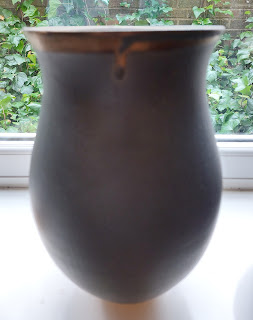Along Everton Road.
There is a tall grand terrace.With remnents of its doorway fanlight faded glory. It stands there tall in defiance.
I will not be moved it says to me, in the autumn sunshine.
I will not fall down, no matter what you do.
Built 1824. there are a few alterations and a bit of work could be put right.
Generally I hate mock Georgian. The proportions don't work because the ceiling heights are usually reduced. This is the real thing.
Looking smaller than its three storeys in pictures, than its true scale.
It stands there as if it has been left behind and in another timezone.
Liverpool in the 1980's.
You could almost put its faded elegance to a UB40 soundtrack and without too much effort, imagine what it was like in the late seventies in post war decline Liverpool, managed decline. Thatcher decline.
When the mantra was to manage that decline because Liverpool was dying in front of our eyes.
I saw it in spray can graffiti before grafitti became fashionable.
“Will the last person to leave Liverpool switch off the lights'.
It was a distress call. A pleading.
Vandalism in protest.
I know because I have done it too.
Declaring that Lady Doreen and Sir Trevor Jones in my opinion were “Partners in Slime”.
The terrace plus the adjoining row which are in good order were mentioned in 'Buildings of Liverpool'...saying they were needing attention.
That book was published by Liverpool City Council in 1978.
Just how can this be allowed to happen to such an imposing row of beautiful proportioned dwellings?
It is owned by Liverpool City Council, thats how.
A labour council who behave like Tories.
Where Mayor Joe Anderson and his Head of Regeneration were arrested, alledgedly as partners in slime.
They and the council were probably waiting for it to get in a worst state so they can do us all a favour.
And knock it out to one of the “Cosy” developers that they fed with our land, that we the citizens of Liverpool own.
Plumpton Terrace was alive when I was young.
Everton Road leads into St Domingo Road and thats where I was born in Wye Street almost next to Everton Library that is still standing.
Just about.
It may receive some attention soon.
Or is that another empty Liverpool heritage promise?
Across the road is the beautiful and historic Grade I listed St Georges Church.
Which was my church of St Georges infant school, where we were led to pray before I discovered the untruths contained within religion.
I walk through its gatepost entrance, that I once climbed and clung to, and threw confetti over my neighbour in celebration as he walked through it, beneath me with his bride, on his marriage day.
It is easy for you to imagine yourself in the countryside.
At the top of Beacon lane.
St Georges platau has always been an important place.
Feel the craftsman cut 18th century script in the historic stones, that all tell a story, in the graveyard and you can feel the history through your fingertips

I got quite emotional there today. Maybe I was remembering sitting inside looking up at the majesty of its architecture when as a six year old, not knowing that this was a Rickman design but knowing that it was special.
There is a bit of, a new, mad looking Acadamy heading back to Plumpton Terrace. The place where as a child I once went to the Red Triangle club. That was a long time before the Kung Fu fighting Bruce Lee craze took hold.
This is where another neighbour of mines brother, Steve, older than me, trained. He went to compete at the Olympics. The Red Triangle has trained some good people.
And kept many young Liverpudlians off the street. Maybe gave them some pride.
This area has had its ups and downs and most of it is on the up.
We need to Save Plumpton Terrace-From Liverpool City Council.
While there are fortunes going into new build shoe boxes, we need to respect the past, where we come from.
This building, or buildings need to be saved.
So what could it be, well as I remember those dark Boys from the Blackstuff days.
I can also remember how I felt proud to have a certiificate, a City and Guilds certificate. That showed that I had trained as a proper apprentice.
That I had served my time, not inside, where poverty wants to grab you and take you down to.
But as a carpenter. “You will never be out of work” I was told.
 Now
Liverpool needs more trademen. Good lads and now ladies, who will feel the same pride
as I did.
Now
Liverpool needs more trademen. Good lads and now ladies, who will feel the same pride
as I did.
Like the mythical plasterer written into Alan Bleasdales script who signed his name on the corner of his wall because he was so proud of his work.
Yes I remember him too.
Everton needs to rekindle its pride and look after its youth and give it hope and a new future.
Plumpton Terrace could just be the place to do that.
Save Plumpton Terrace-From Liverpool City Council who have let it decline and will let it fall down.
If we let them. They Are Guilty
Liverpool The City That Knocked The Cavern Down And Then Called Itself Beatles Town.
SAVE EVERTON LIBRARY TOO
Living In Liverpool Its too hard to bear sometimes






































